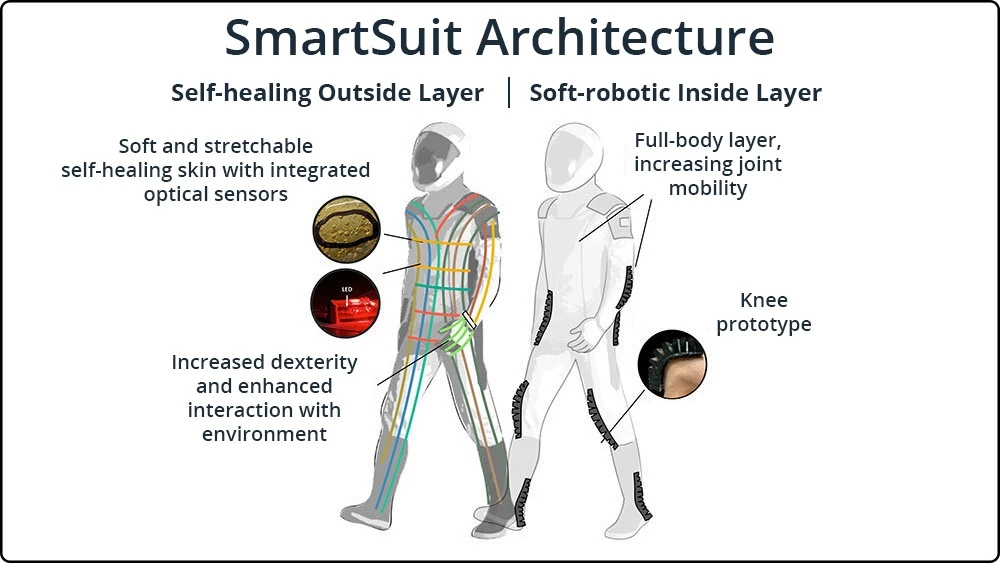Texas A&M engineers led by Ana Diaz Artiles are developing soft robotic technology that could make future "SmartSuit" space suits for planetary exploration more safe, comfortable, and energy efficient for astronauts.
If humans are ever going to be more than tourists in space limited to gawking out the windows, space suits need to move into the 21st century. Today, astronauts have a choice of two kinds of space suit. One is a group of glorified flight suits that are designed to protect crews from accidental depressurization during lift off and reentry. The other is Russian and American full-pressure suits used for ExtraVehicular Activities (EVAs) that haven't changed since the early 1980s.
Though there have been some new emergency suits developed by SpaceX and Boeing, the EVA suit technology is still just a tiny step ahead of the suits worn by Armstrong and Aldrin when they first set foot on the Moon in 1969.
To give credit where credit is due, modern space suits are remarkable pieces of equipment. Though it looks like bulky apparel, a space suit is nothing less than a spacecraft shaped like a human. Like a spacecraft, it keeps its wearer alive and provides protection against vacuum, heat, cold, and radiation, and some even have propulsion systems. On top of all of this, the suit has mobility.

The annoying part is that space suits have a long way to go before they are truly comfortable or efficient. One reason is that space suits have to contain air with enough pressure to sustain the wearer. Unfortunately, this turns the suit into a starfish-shaped balloon that is as difficult to bend as a car tire. To overcome this, the joints of the suit are made up of a series of constant volume bellows. When these ring-shaped structures are bent, air shifts from one side to another, allowing the joint to bend.
So far so good, but these joints are uncomfortable, they take work to bend, and want to snap back to their original position when the astronaut stops pushing. The Texas A&M team's idea is to replace these bellows with soft robotic actuators that do most of the work, keep the joint in the desired position, and allow the suit to fit more comfortably.
Currently, the researchers are working on a prototype robotic knee and modeling against the mobility of a standard suit and a naked body. They found that such actuators could save a significant number of calories expended during a Mars mission and allow astronauts to work with less sweating.
The ultimate goal is to integrate these soft robotic actuators in a self-healing full-body suit with integrated sensors. This new suit would provide extra mechanical counterpressure (MCP). That is, press in against the user. This would allow the suit to function with a quarter the air pressure of a conventional suit. This would not only make the suit more comfortable to wear, but also reduce the danger of decompression sickness and reduce the need to pre-breathe pure oxygen before donning the suit.
"Imagine wearing really tight Under Armour or really tight leggings," said graduate student Logan Kluis. "That pressure pushing down on your body would be in replacement of or in addition to gas pressure. So the idea with the SmartSuit is that it would use both mechanical pressure and gas pressure."
The research was published in Aerospace Medicine and Human Performance.
Source: Texas A&M





